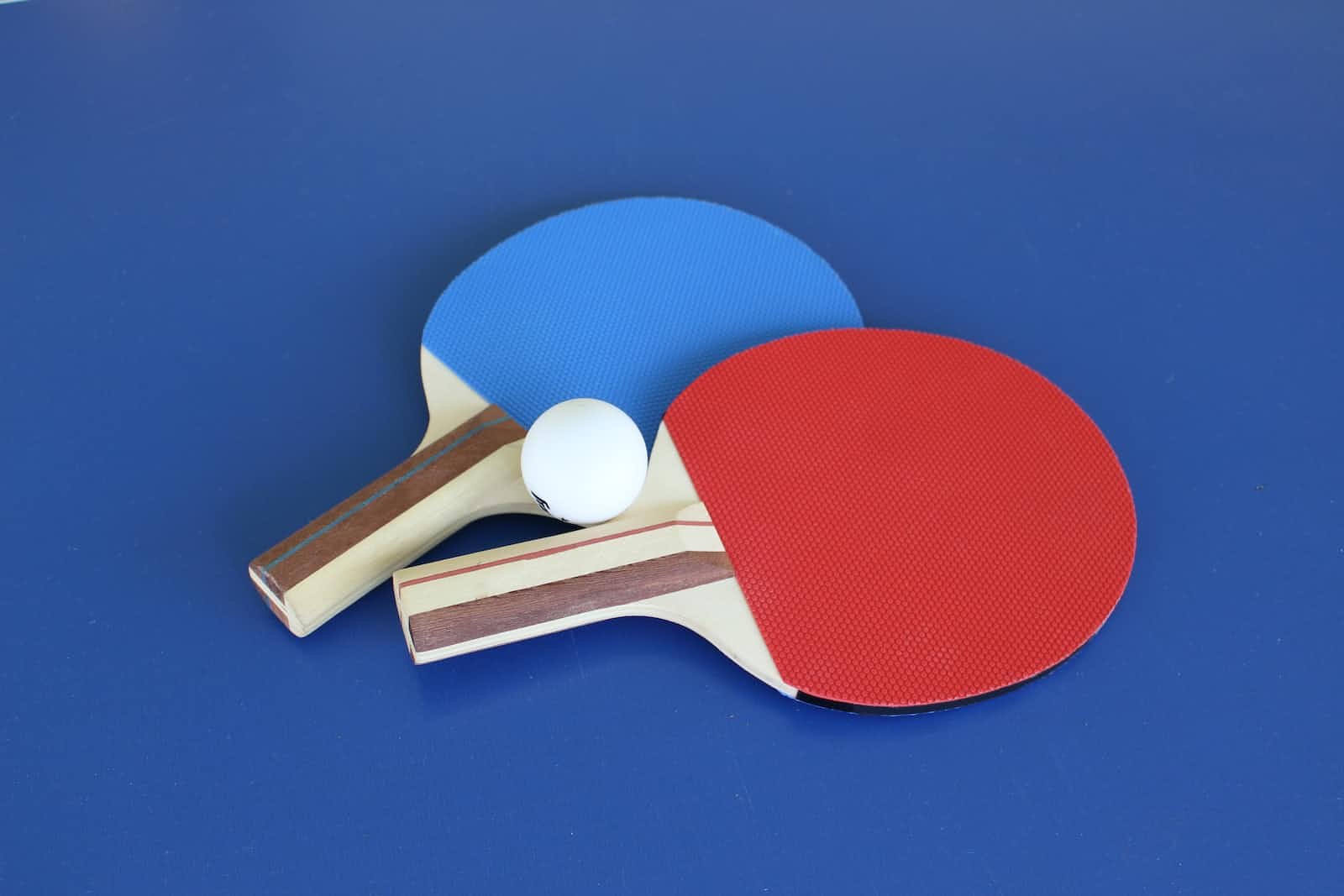Part 8: Use Reinforcement Learning to simulate a game of Table Tennis with Graphics in Python Source Code
 Thomas Cherickal
Thomas Cherickal
import numpy as np
import pygame
Constants for the game
PADDLE_WIDTH = 10
PADDLE_HEIGHT = 50
BALL_RADIUS = 5
PADDLE_SPEED = 5
BALL_SPEED = 5
Initialize the game
pygame.init() screen = pygame.display.set_mode((400, 300))
clock = pygame.time.Clock()
Initialize the paddles and ball
paddle1_x = 10 paddle1_y = 150 paddle2_x = 380 paddle2_y = 150 ball_x = 200 ball_y = 150
Initialize the reinforcement learning agent
agent = ReinforcementAgent()
Main game loop
while True: # Handle events for event in pygame.event.get(): if event.type == pygame.QUIT: pygame.quit() sys.exit()
Copy code# Update the paddles
paddle1_y += agent.get_action(paddle1_x, paddle1_y, paddle2_x, paddle2_y, ball_x, ball_y) * PADDLE_SPEED
paddle2_y += agent.get_action(paddle2_x, paddle2_y, paddle1_x, paddle1_y, ball_x, ball_y) * PADDLE_SPEED
# Update the ball
ball_x += BALL_SPEED
ball_y += BALL_SPEED
# Check for collisions
if ball_x + BALL_RADIUS > paddle2_x and ball_y > paddle2_y and ball_y < paddle2_y + PADDLE_HEIGHT:
# Reflect the ball off the paddle
ball_x = 2 * (paddle2_x - BALL_RADIUS) - ball_x
BALL_SPEED = -BALL_SPEED
agent.update_reward(1)
elif ball_x - BALL_RADIUS < paddle1_x and ball_y > paddle1_y and ball_y < paddle1_y + PADDLE_HEIGHT:
# Reflect the ball off the paddle
ball_x = 2 * (paddle1_x + BALL_RADIUS) - ball_x
BALL_SPEED = -BALL_SPEED
agent.update_reward(1)
elif ball_x + BALL_RADIUS > 400:
# Player 1 scores a point
ball_x = 200
ball_y = 150
BALL_SPEED = 5
agent.update_reward(-1)
elif ball_x - BALL_RADIUS < 0:
# Player 2 scores a point
ball_x = 200
ball_y = 150
BALL_SPEED = -5
agent.update_reward(-1)
# Draw the paddles and ball
screen.fill((0, 0, 0))
pygame.draw.rect(screen, (255, 255, 255), (paddle1_x, paddle1_y, PADDLE_WIDTH, PADDLE_HEIGHT))
pygame.draw.rect(screen,
(255, 255, 255), (paddle2_x, paddle2_y, PADDLE_WIDTH, PADDLE_HEIGHT)) pygame.draw.circle(screen, (255, 255, 255), (ball_x, ball_y), BALL_RADIUS)
Copy code# Update the display
pygame.display.flip()
# Limit the frame rate to 60 FPS
clock.tick(60)
Write a blog article to explain to beginners the code above
Welcome to the world of reinforcement learning! In this article, we will be discussing how to use reinforcement learning to simulate a game of table tennis in Python using the Pygame library.
But first, let's define what reinforcement learning is. Simply put, reinforcement learning is a type of machine learning that involves training an agent to perform a certain task by providing it with rewards and punishments based on its actions. The goal of the agent is to maximize the rewards it receives over time by learning from its experiences and adjusting its actions accordingly.
Now, let's dive into the code. First, we define some constants for our game such as the width and height of the paddles and the radius of the ball. We also define the speeds of the paddles and the ball.
Next, we initialize the game using the Pygame library and set the screen size to 400x300. We also create a clock object to control the frame rate of the game.
After that, we initialize the paddles and ball at their starting positions. We also create an instance of our reinforcement learning agent, which we will discuss later.
In the main game loop, we handle events such as quitting the game and update the paddles and ball. The paddles are updated by calling the "get_action" method of our reinforcement learning agent, which returns an action for the paddle to take based on its current state (which includes the positions of the paddles and ball). The ball is updated by adding a constant speed to its x and y positions.
We then check for collisions between the ball and the paddles and reflect the ball off the paddle if necessary. If the ball goes off the screen, we reset it to the center and update the reward for the reinforcement learning agent based on whether the ball was scored by player 1 or player 2.
Finally, we draw the paddles and ball on the screen and update the display. We also limit the frame rate to 60 FPS using the clock object.
And that's it! With these basic building blocks, you can create a simple game of table tennis using reinforcement learning in Python. Of course, there are many more advanced concepts and techniques that you can explore, such as neural networks and deep learning, to improve the performance of your agent and make it even more competitive. We hope this introduction has sparked your interest in reinforcement learning and encouraged you to try it out for yourself. Happy coding!
Subscribe to my newsletter
Read articles from Thomas Cherickal directly inside your inbox. Subscribe to the newsletter, and don't miss out.
Written by

Thomas Cherickal
Thomas Cherickal
Resume: https://thomascherickal.com Portfolio: https://linktr.ee/thomascherickal Contact me at: https://linkedin.com/in/thomascherickal GitHub: https://github.com/thomascherickal